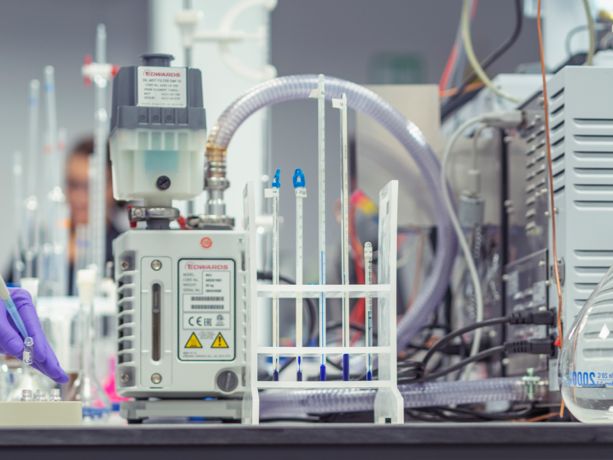New Technique Uses Paper Waste to Improve Carbon Reduction Reactions

Reducing the amount of carbon released via emissions is vital to reducing our impact on the atmosphere and lowering the rate of global warming. Carbon capture and reduction techniques have therefore steadily been developed, where the carbon dioxide is either stored, or converted into valuable by-products that can be reused by different industries.
However, there are still issues with this technology. One of the most pressing is that carbon capture and conversion is expensive, both financially and in terms of energy. With a high energy requirement, but correspondingly low efficiency, many carbon conversion techniques have been costly in a lab, let alone on an industrial scale. Additionally, it’s been difficult to find economic viability of this technique as it can struggle to make a profit. Typically, valuable by-products would help to offset the costs of a technology – but a low yield of high value by-products (and vice versa) has limited the scalability.
Fortunately, science is constantly evolving. Researchers from McGill University, using the Canadian Light Source from the University of Saskatchewan, have tested an innovative new approach, using a by-product from the paper industry to improve the efficiency of carbon reduction reactions.
In a regular electrolyser there are two electrodes. The cathode is a catalyst (usually made from metals like copper, silver, or tin) which uses a redox reaction to turn CO2 into carbon monoxide (CO) and other by-products like formate, syngas, alcohols and other valuable hydrocarbons. The anode uses the oxygen evolution reaction (OER) to generate oxygen via water electrolysis. However, this requires a lot of (expensive) energy.
Note: reduction and oxidation are redox reactions, as they involve the movement of electrons (either through loss or gain).
To counteract these energy requirements, the team looked at using an oxidative reaction of HMF to replace OER at the anode. HMF, or 5-hydroxymethyl-furfurral, is a plant-based by-product of paper manufacture which can be broken down to generate valuable substances like formic acid and 2,5-furandicarboxylic acid (FDCA) – an important precursor to the production of polyethylene terephthalate (PET), which is a biomass-based plastic.
Unlike OER, the researchers found during the study that the HMFOR reaction requires less energy whilst maintaining a high reaction rate. They also went a step further, by testing this reaction with a NiP@Ni/CF electrode. Electrode materials can be another expense within this reaction, however nickel (Ni) and phosphorus (P) are relatively inexpensive when compared to other noble metals. The reactionary potential was also increased with a carbon felt electrocatalyst base, which was deposited with additional nickel. Carbon felt is mechanically stable, with plenty of redox reaction sites, and fairly inexpensive to produce.
According to their testing, using a HMFOR in the anode made the whole system approximately 5-6% more energy efficient (which translates to around 11-12% more effective over just the OER ‘as the anodic reaction’). They also explored the efficiency of using a copper or copper-PTFE cathode. Whilst both improved the efficiency of the reaction, the use of PTFE provided ‘an extra hydrophobic GDL [gas diffusion layer], enhancing the production of C2+ products by C-C coupling. Therefore, when coupled with the HMFOR, the energy efficiency for CO2RR products increases from 47.0% to 52.4%’.
Contributing to the usefulness of this method, there are additional benefits outside of improved efficiency. Using a by-product from the paper industry helps to create a more circular resource economy, reducing the waste that’s put into the environment.
Looking for in-depth materials services?
With everything from chemical and mechanical material identification to failure investigations, our team at The Lab is perfectly positioned to help you develop your understanding of vital materials and products within your business.
Since materials science is constantly evolving, at The Lab we make sure our experts have access to the latest technology to ensure accurate and valuable test results. Book an obligation-free consultation, or contact our team to see how we can help you.
Find expert materials testing services at The Lab
For more information, advice, and industry insights, explore The Lab’s News and Knowledge Hub…
Researchers Propose New Chemical Reaction to Remove and Bind Carbon Dioxide From the Atmosphere | Researchers Test New Method to Produce Green Hydrogen | Researchers Discover New Non-Toxic Method to Produce Graphene Oxide
- Author
- Andrew Yarwood
- Date
- 21/06/2024
